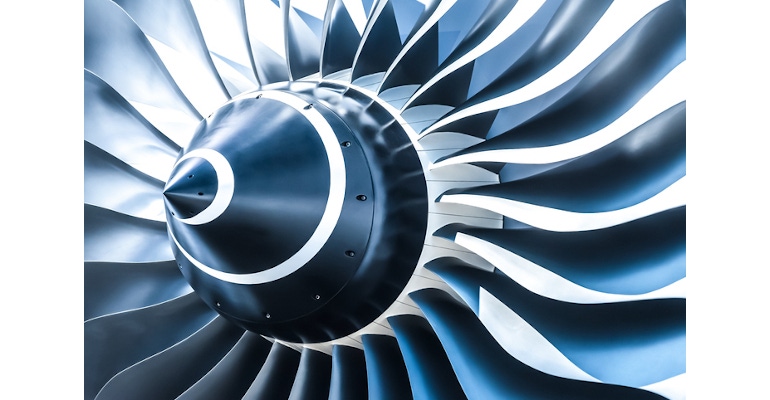Examining issues with a blucket, which is the vaned piece of a jet engine also referred to as a blade and sometimes a bucket.
October 20, 2003

Modern jet engine components face a hellish environment. Operating temperatures may reach 1,000C, hundreds of degrees above red heat and perilously close to the melting point of the alloy. These components are also subject to oxidation and to impacts with such foreign objects as birds and even engine parts. Foreign object impacts may cause catastrophic engine failures leading to crashes and wholesale loss of life. Chickens and the bodies of other recently deceased avian creatures are thrown into the fronts of large aircraft engines to determine susceptibility to impact damage.
The case at hand involved a twin-engine jet airplane owned by a major overnight delivery service. The aircraft experienced extreme vibration and one engine was reduced to idle. A precautionary landing was made and the engine disassembled.
What Is a Blucket?
The vaned pieces of jet engines are sometimes referred to as blades and sometimes as buckets. In this case the two terms were combined to form "blucket." The delivery service sent me a box of 53 turbine bluckets with a request to find out what had gone wrong. I immediately saw that a piece the size of a small hand calculator had fractured from the outboard end of one blucket, and the other 52 were pretty well dinged up. The engine had eaten the blucket fragment but had somehow held together rather than exploding. I believe that the engine had been designed and tested to ensure such robust behavior.
Alloys for high temperature turbine use are known as superalloys. These are commonly nickel-based with additions of many elements, often including carbon, chromium, cobalt, aluminum, and iron. Both composition and microstructure are meticulously tailored to optimize thermal resistance without allowing some undesirable trait, such as brittleness. The bluckets in this case were castings of a common proprietary nickel-based alloy.
The failed blucket showed no evidence of significant oxidation or foreign object damage. Microscopic study showed neither fatigue striations nor significant casting porosity. The fracture surface was of a type consistent with high temperature creep failure.
Creep, defined as continuing deformation with time under constant load is the chief enemy of turbine components. Metal grains in the bluckets elongate in the radial direction by diffusion of atoms from faces parallel to the stress axis to planes perpendicular. Equiaxed grains thus become elongated and the component will, in time, fail.
The greater the distance between faces, the longer the time for the atoms to diffuse between the two. Single crystal components have the greatest creep resistance, but are extremely expensive to produce. More commonly, bluckets are cast under conditions giving a large grain size. Such a process gives a reasonable balance between the ideal and the economical.
So why did the blucket fail? Microscopic study showed that some grains extended the entire thickness of the blucket. Such a grain size would be fine were these grains oriented for high creep resistance. In this case, the grains were at random and some were poorly oriented.
Polycrystalline bluckets must have several grains across even the thinnest sections so as to average out properties. In this case an unsuitable combination of pre-heating of the mold and superheating of the melt led to an inferior casting. In other words, there was poor foundry practice. Proper foundry practice results from close cooperation between the foundry and the customer, which was clearly missing in this case. I do not know who was at fault, but suspect that my client got a new engine, at the very least.
About the Author(s)
You May Also Like





